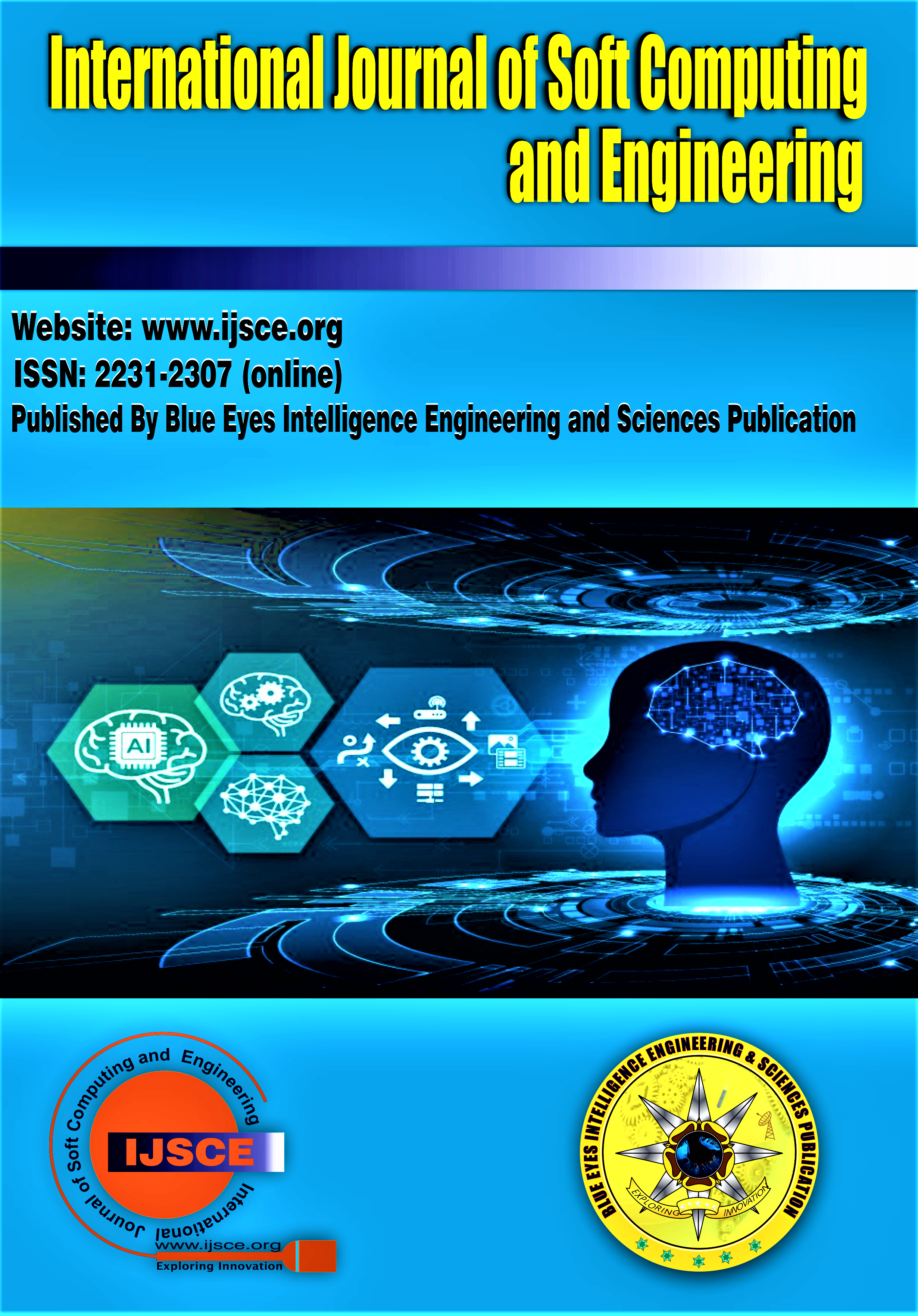Fischer Tropsch Synthesis Wastewater Treatment Study using DW SIM
Main Article Content
Abstract
This project focuses on utilizing DWSIM to treat wastewater from the Fisher Tropsch Process. A well-known technique for transforming synthesis gas, a combination of carbon monoxide and hydrogen, into liquid hydrocarbons is the Fischer-Tropsch process. However, this procedure creates wastewater, which if not adequately treated, includes a variety of chemicals that can be detrimental to aquatic life. To get rid of these contaminants and satisfy regulatory standards, the Fischer-Tropsch process requires water treatment. The most often employed therapeutic modalities are physical, pharmacological, and biological therapies. In order to maintain the Fischer-Tropsch process' sustainability and environmental friendliness, efficient and effective water treatment is essential. The Fischer- Tropsch process can continue to be an effective way to make liquid hydrocarbons while minimizing its negative effects on aquatic habitats with the right water treatment. As a result, the goal of this research is to examine the treatment process, determine the chemical oxygen demand (COD) level of Fischer Tropsch water obtained by distillation, reduce its concentration, and prepare the water for neutralization.
Downloads
Article Details
Section

This work is licensed under a Creative Commons Attribution-NonCommercial-NoDerivatives 4.0 International License.
How to Cite
References
Teimouri, Zahra, et al. “Kinetics and Selectivity Study of Fischer–Tropsch Synthesis to C5+ Hydrocarbons: A Review.” Catalysts, no. 3, MDPI AG, Mar. 2021, p. 330. Crossref, doi:10.3390/catal11030330. https://doi.org/10.3390/catal11030330
Rahman, Nazeri Abdul, et al. “Fischer Tropsch Water Composition Study from Distillation Process in Gas to Liquid Technology with ASPEN Simulation.” Case Studies in Chemical and Environmental Engineering, Elsevier BV, June 2021, p. 100106. Crossref, doi:10.1016/j.cscee.2021.100106. https://doi.org/10.1016/j.cscee.2021.100106
PubChem. “PubChem.” PubChem, https://pubchem.ncbi.nlm.nih.gov/. Accessed 25 Jan. 2024.
Prausnitz, John M., et al. Molecular Thermodynamics of Fluid-Phase Equilibria. Pearson Education, 1998.
Bandilla, Karl W., and Michael A. Celia. “Active Pressure Management through Brine Production for Basin-Wide Deployment of Geologic Carbon Sequestration.” International Journal of Greenhouse Gas Control, Elsevier BV, June 2017, pp. 155–67. Crossref, doi:10.1016/j.ijggc.2017.03.030. https://doi.org/10.1016/j.ijggc.2017.03.030
PINES, HERMAN. “Synthesis of Liquid Hydrocarbons (Synthetic Fuels).” The Chemistry of Catalytic Hydrocarbon Conversions, Elsevier, 1981, pp. 276–93, http://dx.doi.org/10.1016/b978-0-12-557160-9.50013-7.
“Fischer Tropsch Water Composition Study from Distillation Process in Gas to Liquid Technology with ASPEN Simulation - ScienceDirect.” ScienceDirect.Com | Science, Health and Medical Journals, Full Text Articles and Books., https://www.sciencedirect.com/science/article/pii/S2666016421000281?via%3Dihub. Accessed 25 Jan. 2024.
Alihellal, Dounia, and Lemnouer Chibane. “Simulation Study of the Effect of Water Removal from Fischer–Tropsch Products on the Process Performance Using a Hydrophilic Membrane Reactor.” Reaction Kinetics, Mechanisms and Catalysis, no. 2, Springer Science and Business Media LLC, Dec. 2015, pp. 605–21. Crossref, doi:10.1007/s11144-015-0961-x. https://doi.org/10.1007/s11144-015-0961-x
“CORE – Aggregating the World’s Open Access Research Papers.” CORE – Aggregating the World’s Open Access Research Papers, https://core.ac.uk/display/39670025?utm_source=pdf&utm_medium=banner&utm_campaign=pdf-. Accessed 25 Jan. 2024.
Kung, Chun-Chan, et al. “Nitrogen Isotope Fractionations in the Fischer-Tropsch Synthesis and in the Miller-Urey Reaction.” Earth and Planetary Science Letters, no. 1, Elsevier BV, Dec. 1979, pp. 141–46. Crossref, doi:10.1016/0012-821x(79)90072-4. https://doi.org/10.1016/0012-821X(79)90072-4
Contributors to Wikimedia projects. “DWSIM - Wikipedia.” Wikipedia, the Free Encyclopedia, Wikimedia Foundation, Inc., 10 July 2011, https://en.wikipedia.org/wiki/DWSIM.
“Physical Properties.” Encyclopædia Britannica, Encyclopædia Britannica, https://www.britannica.com/science/water/Physical-properties. Accessed 25 Jan. 2024.
Poddar, Dr. S. (2020). Novel Simulation and Optimization for the Production of Green Products I.E., Green Gasoline, Green Diesel and Green Waxes. In International Journal of Innovative Technology and Exploring Engineering (Vol. 9, Issue 6, pp. 1428–1436). https://doi.org/10.35940/ijitee.f4569.049620
Tiwari, P., Jain, K., Dubey, K., Ali, M., & Thakur, M. (2020). Feasibility of Fuel Synthesized from Solid Plastic Wastage. In International Journal of Engineering and Advanced Technology (Vol. 9, Issue 3, pp. 4165–4169). https://doi.org/10.35940/ijeat.c6632.029320
Yadav, Mr. R. J., Solanki, S., Saharna, S., Bhardwaj, J., & Ramvijay. (2020). Pyrolysis of Waste Plastic into Fuel. In International Journal of Recent Technology and Engineering (IJRTE) (Vol. 9, Issue 1, pp. 2600–2605). https://doi.org/10.35940/ijrte.a2662.059120
Varma, D. S., & Kumar, D. B. N. (2019). Physical and Mechanical Properties of Self-curing and Self-compacting Concrete using Nano-silica as Mineral Admixture. In International Journal of Innovative Technology and Exploring Engineering (Vol. 9, Issue 1, pp. 3527–3530). https://doi.org/10.35940/ijitee.a5347.119119
Islam, M., Mohamed, S. F., Mahmud, S. H., M, A. K. A., & Saeed, K. A. (2020). Towards A Framework for Development of Operational and Maintenance Cost Model of Highway Project in Malaysia. In International Journal of Management and Humanities (Vol. 4, Issue 5, pp. 89–95). https://doi.org/10.35940/ijmh.e0530.014520





